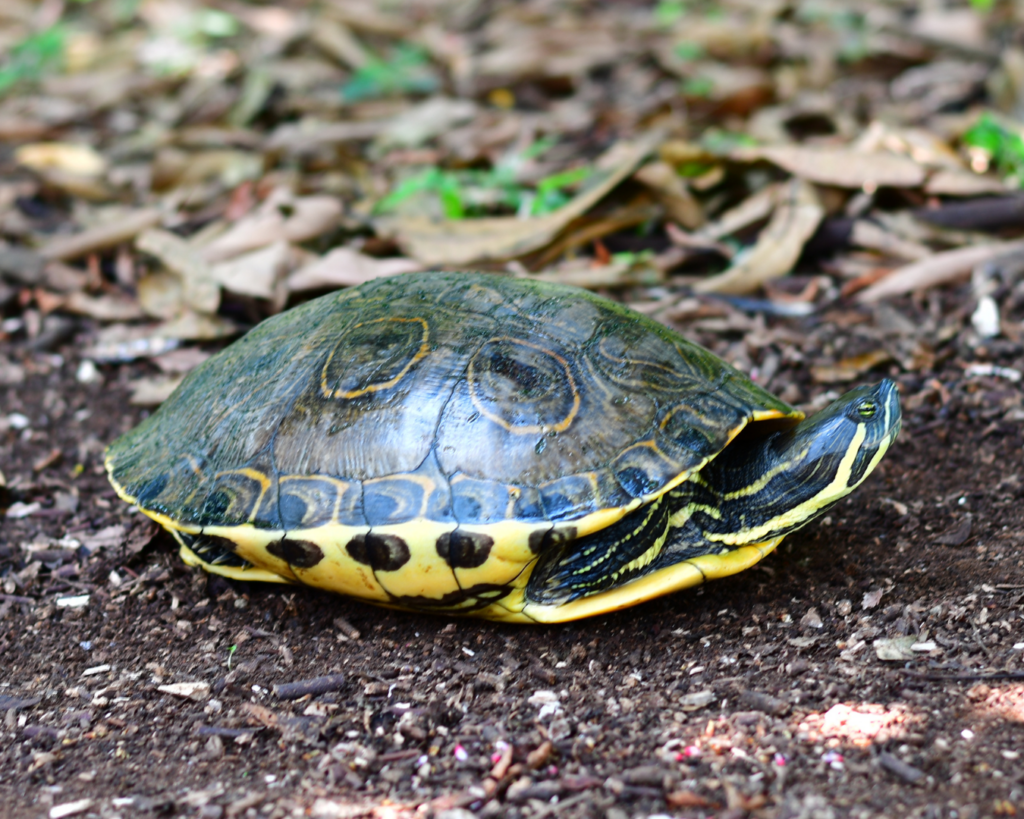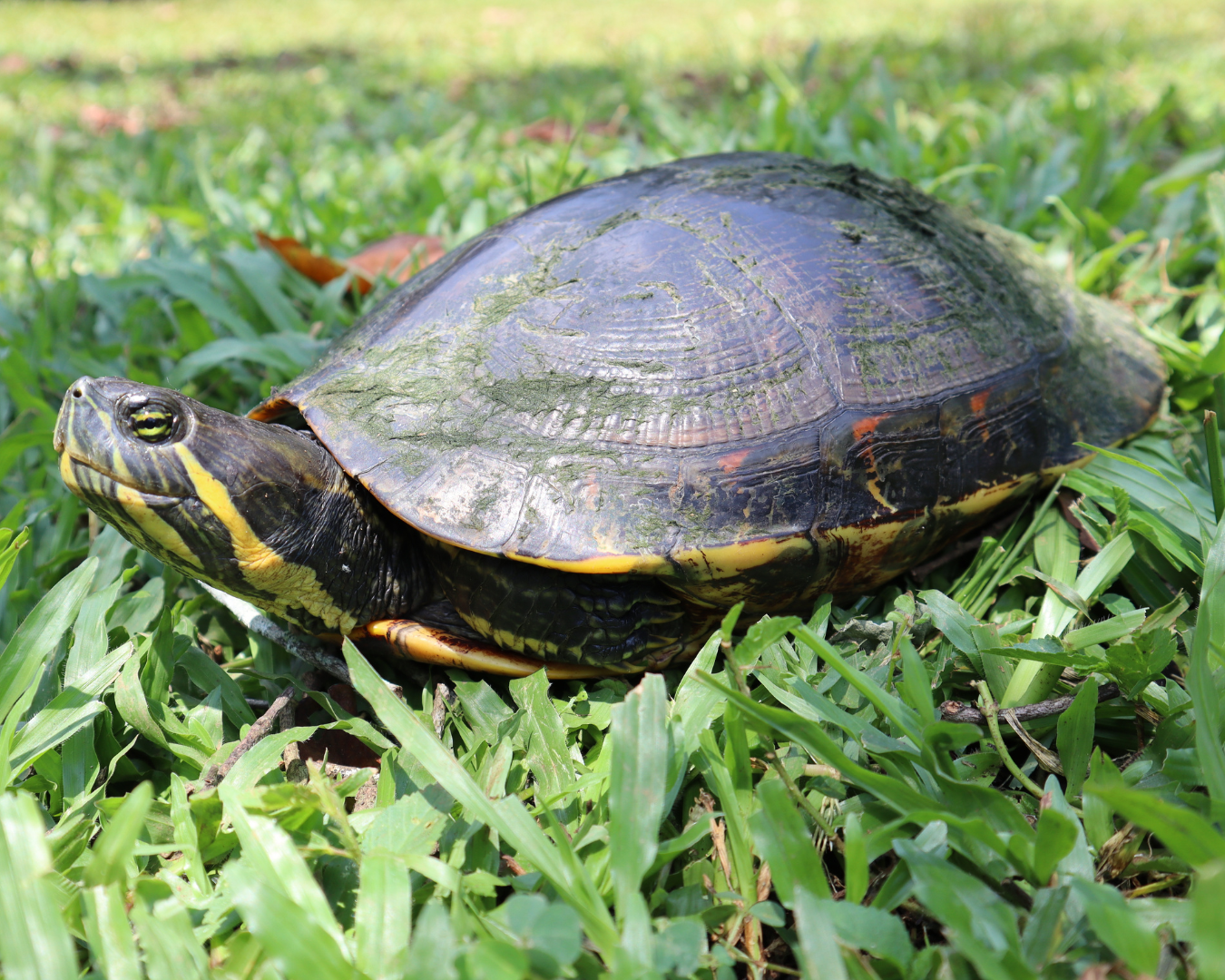The last species we’re spotlighting for Hicatee Awareness Month is the Mesoamerican Slider!
Like the other friends of the Hicatee we’ve featured this month, this turtle faces threats of habitat destruction and collection for the food & pet trades. Due to a lack in research and long-term population monitoring, this species’ IUCN Red List Status is classified as Data Deficient. Thanks to our surveys, research, and community engagement with Belize Foundation for Research and Environmental Education (BFREE) in Belize, and Eduardo Reyes Grajales in Chiapas, Mexico, we are learning more about this species and what conservation actions it needs to continue to thrive in the wild.

The Mesoamerican Slider may look familiar. It is in the genus Trachemys, just like the populous Yellow-bellied and Red-eared sliders, common species that can now be found around the world due to their proliferation by the pet trade. This species is also commonly found in the pet trade and, like the other two, are released into non-native areas. The easiest way to distinguish the Mesoamerican Slider from the Yellow-bellied or Red-eared is by the ring pattern on their carapace scutes and the extensive patterning along the seams of their plastron scutes.
Follow along throughout October to learn more about the turtles in Belize that need our help, and learn more about these turtles in the educational materials and webinars hosted by BFREE here!
“Slide”, the Mesoamerican Slider, is one of the friends from the “Hicatee and Friends” campaign for Hicatee Awareness Month.
- Pictured: Mesoamerican Slider
- Countries of Origin: Belize, Costa Rica, Guatemala, Honduras, Mexico, Nicaragua, Panama
- Habitat: Wide variety of subtropical and temperate still and moving freshwater bodies, including lakes, ponds, oxbows, reservoirs, swamps, marshes, rivers, and creeks
- Wild Population: Unknown; populations intensively hunted for trade and consumption; abundant in many areas; highly adaptable to man-made freshwater habitats
- IUCN Red List Status: Data Deficient
- Threats: Habitat destruction, alteration, and degradation; collection for the pet, food, and curio trades and local consumption

Images by Eduardo Reyes Grajales.
